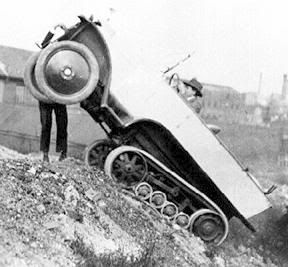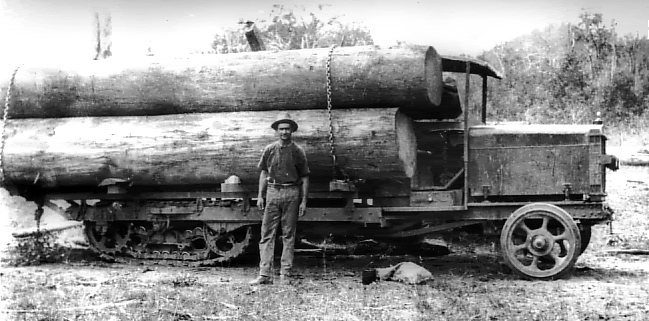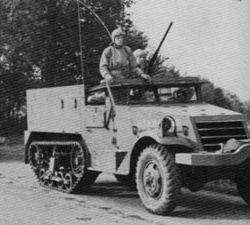Tämän lisäksi hän oli innokas metsämies, ruhtinaiden vanha tapa tämäkin.
Metsästys oli myös vielä tuohon aikaan aatelisten huvi. Tsaari oli myös mukavuuden haluinen ja hän metsästi seurueen kanssa, istuen vaunussa ja ampuen riistaa, samalla nauttien samalla eväitä ja seurustellen. Tapa oli suosittu, saada nauttia kauniista luonnosta istuen vaunussa mukavasti.
Vaunusta poistuminen merkitsi saappaiden ja kenkien kastumista, lisäksi etenkin naisten upeiden pukujen likaantuminen kuraisessa maassa oli huomattava haitta.
Kun hoviin ostettiin autoja, tsaarin metsästys retket seurueen kanssa tehtiin autoilla.
Tsaarin käyttämät henkilö autot oli suurelta osalta ranskalaisia Citröen Six autoja.
Syksyllä märkä ja liukas maa, talvella lumi esti seurueen metsästysmatkat. Etenkin naisten ottaminen mukaan metsästys matkalle oli hankalaa hameiden käytön takia.
Adolphe Kégresse (1879, Héricourt, Haute-Saône, 1943) työskenteli tsaarin hovissa keisarin alaisena, hän muutti Pietari (St Peterburg) 1905 asumaan, tsaarin toivomus.
Adolphe Kégresse oli ranskalainen sotilas ja insinööri joka keksi yhdistää kappaleet
vaijerin avulla ketjun muotoon kuten pyörässä ja liittää siihen käpälät tai kengät, jotka auttoivat liikkumaan pehmeässä maastossa ja myös lumessa.
Tehtaan avustuksella valmistettiin keinuva teli jonka taakse lisättiin veto pyörä joka sai voiman ketjun välityksellä auton alkuperäisestä taka-akselista.Tandem etupään pyörä toimi johtopyöränä, joka ohjasi telan liikettä edessä ja piti sen kireänä. Tandemin alapuolella oli neljä pientä pyörää ottamassa vastaan, sekä jakamassa tela painetta ja
lisäämässä sen pitoa tai otetta maasta.
Adolphe Kégresse laittoi näin syntyneen tandem akseliston pyörien päälle telaketjun, jossa oli vain metallinen liitos telan molemmilla puolilla, sen liittämiseksi yhteen, telaketjuksi (talvella etupyörien alle liitettiin sukset ja etupyörät jäivät pikolleen).
Oli syntynyt ensimmäinen kumi-tela-ketju. Keksintö joka on yhä yleisempi kaikkialla.
Hän kehitti myös kaksois kytkimen (dual clutch transmission).




-------------------------------------------------------------------------------------------------------------------
-------------------------------------------------------------------------------------------------------------------

---------------------------------------------------------------------------------------------------------------------
Adolphe Kégresse (1879, Héricourt, Haute-Saône - 1943) was a French military engineer, inventor of the half-track and dual clutch transmission.
Born at Héricourt, and educated in Montbéliard, he moved in 1905 to Saint Petersburg, Russia to work for the Russian Tsar Nicholas II.
To improve the mobility of the imperial car park, he invented the Kégresse track to modify normal motor vehicles into half-tracks.
After World War I Kégresse was forced to return to his home country, where he was from 1919 employed by the Citroën company during the 1920s and 1930s to design half-track vehicles, together with engineer Jacques Hinstin.
After leaving the Citroën company he developed in 1935 the AutoServe gearbox-transmission system; in 1939 he pioneered the development of modern small guided tracked bombs. Kégresse died in 1943 at Croissy-sur-Seine.

A Kégresse track is a kind of rubber or canvas continuous track which uses a flexible belt rather than interlocking metal segments. It can be fitted to a conventional car or truck to turn it into a half-track, suitable for use over rough or soft ground.
Conventional front wheels and steering are used, although skis may also be fitted.
The Kégresse propulsion and suspension system incorporates an articulated bogie, fitted to the rear of the vehicle with a large drive wheel at one end, a large unpowered idler wheel at the other and several small guide wheels in between, over which run a reinforced flexible belt. The belt is fitted with metal or rubber treads to grip the ground.

It differs from conventional track systems by using a flexible belt rather than interlocking metal segments.
The name comes from the system's inventor Adolphe Kégresse, who designed the original while working for Tsar Nicholas II of Russia between 1906 and 1916.
He applied it to several cars in the Royal garage including Rolls-Royce cars and Packard trucks.
The Russian army also fitted the system to a number of their Austin Armoured Cars.

After the Russian Revolution Adolphe Kégresse returned to his native country, France, where the system was used on Citroën cars between 1921 and 1937 for off-road and military vehicles.

A series of Expeditions across the undeveloped parts of Asia, Africa and...

...America was undertaken by Citroën, demonstrating the all-terrain capabilities of these vehicles.

LINN / U.S truck tractor.
In the late 1920s the U.S. Army purchased several Citroën-Kégresse vehicles for evaluation followed by a licence to produce them.

Citroën-Kegresse vehicles served in the Polish motorized artillery during the 1930s
This resulted in the Army Ordnance Department building a prototype in 1939.
In December 1942 it went into production with the M2 and M3 half-track versions.

The United States eventually produced more than 41,000 vehicles in over 70 versions between 1940 and 1944.



Rodger.
VastaaPoistaM1922 tank track-shoes
Maybe this is the reason, why the tracks look a little funny.
Track 1 - the shoe is a big gap. = High pulling power.
Track 2 - the shoe is loose = vulcanointi or fixing is bad to this old time system
M 1922 is too heavy and the track too long, the track could not stand the strain of the tank
Thanks Maximex. Sounds good to me.
PoistaThis was very interesting! Again I did not realize that the halftrack was so far advanced so early in history!
VastaaPoista